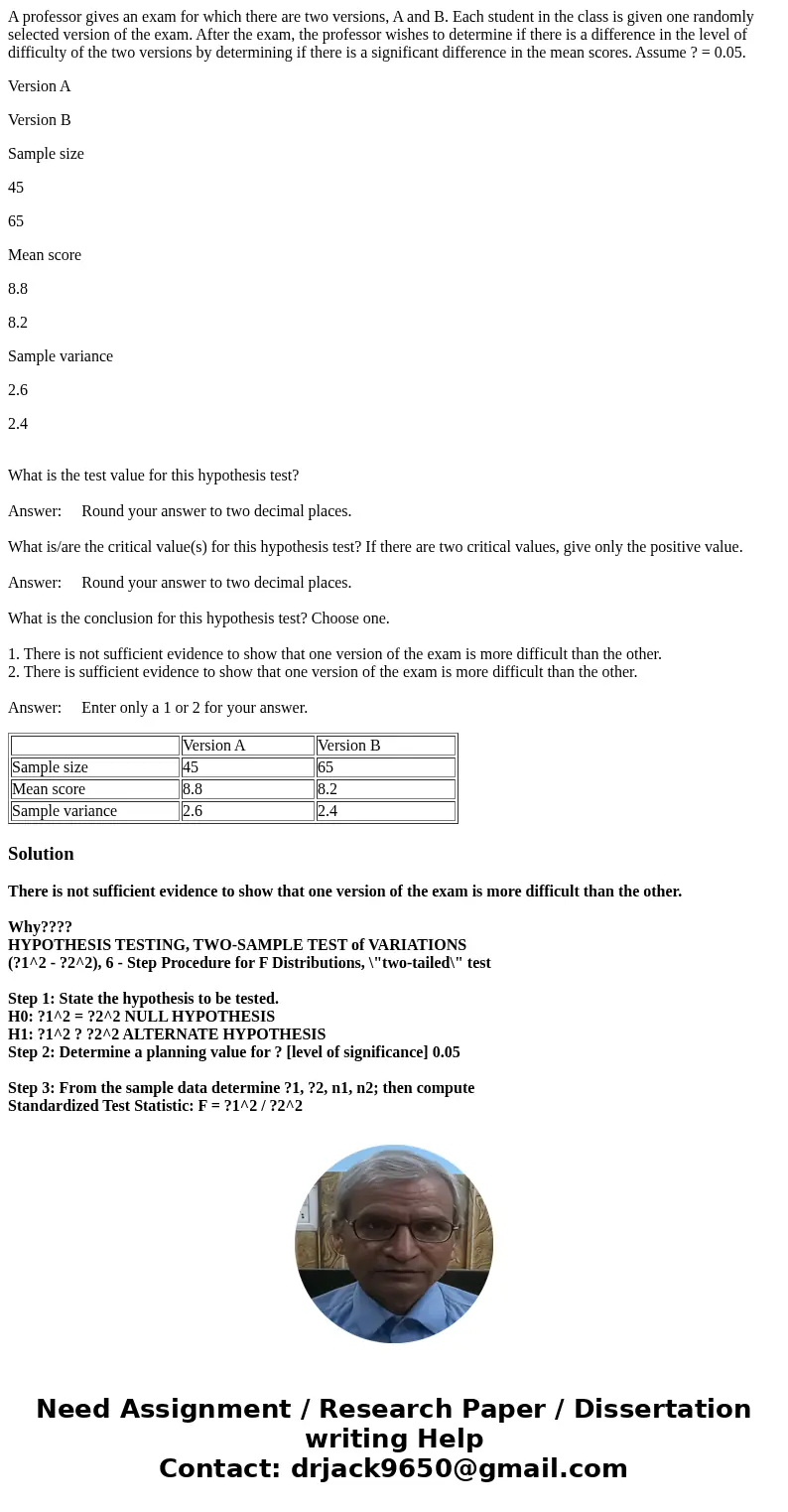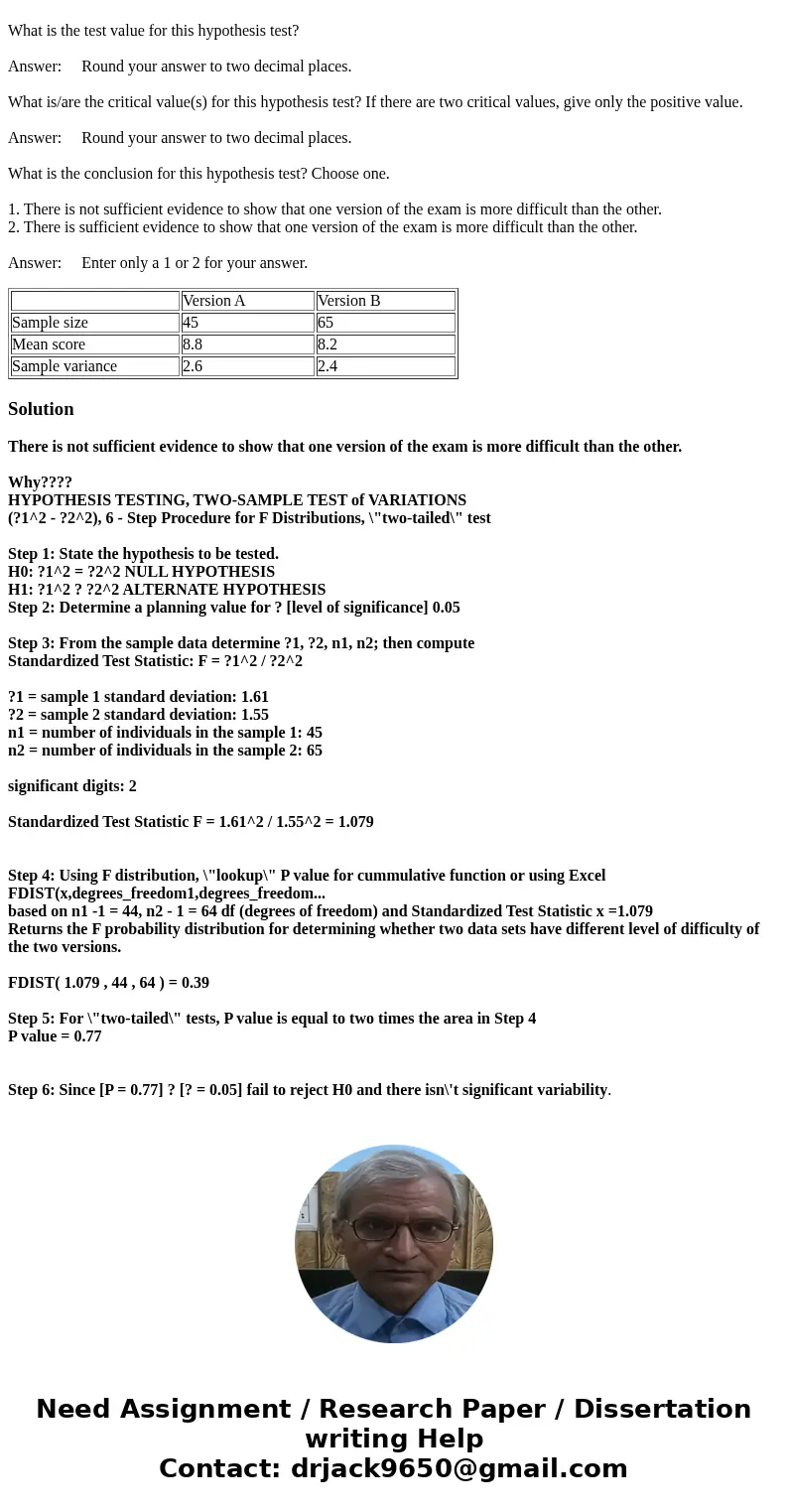A professor gives an exam for which there are two versions A
A professor gives an exam for which there are two versions, A and B. Each student in the class is given one randomly selected version of the exam. After the exam, the professor wishes to determine if there is a difference in the level of difficulty of the two versions by determining if there is a significant difference in the mean scores. Assume ? = 0.05.
Version A
Version B
Sample size
45
65
Mean score
8.8
8.2
Sample variance
2.6
2.4
What is the test value for this hypothesis test?
Answer: Round your answer to two decimal places.
What is/are the critical value(s) for this hypothesis test? If there are two critical values, give only the positive value.
Answer: Round your answer to two decimal places.
What is the conclusion for this hypothesis test? Choose one.
1. There is not sufficient evidence to show that one version of the exam is more difficult than the other.
2. There is sufficient evidence to show that one version of the exam is more difficult than the other.
Answer: Enter only a 1 or 2 for your answer.
| Version A | Version B | |
| Sample size | 45 | 65 |
| Mean score | 8.8 | 8.2 |
| Sample variance | 2.6 | 2.4 |
Solution
There is not sufficient evidence to show that one version of the exam is more difficult than the other.
Why????
HYPOTHESIS TESTING, TWO-SAMPLE TEST of VARIATIONS
(?1^2 - ?2^2), 6 - Step Procedure for F Distributions, \"two-tailed\" test
Step 1: State the hypothesis to be tested.
H0: ?1^2 = ?2^2 NULL HYPOTHESIS
H1: ?1^2 ? ?2^2 ALTERNATE HYPOTHESIS
Step 2: Determine a planning value for ? [level of significance] 0.05
Step 3: From the sample data determine ?1, ?2, n1, n2; then compute
Standardized Test Statistic: F = ?1^2 / ?2^2
?1 = sample 1 standard deviation: 1.61
?2 = sample 2 standard deviation: 1.55
n1 = number of individuals in the sample 1: 45
n2 = number of individuals in the sample 2: 65
significant digits: 2
Standardized Test Statistic F = 1.61^2 / 1.55^2 = 1.079
Step 4: Using F distribution, \"lookup\" P value for cummulative function or using Excel FDIST(x,degrees_freedom1,degrees_freedom...
based on n1 -1 = 44, n2 - 1 = 64 df (degrees of freedom) and Standardized Test Statistic x =1.079
Returns the F probability distribution for determining whether two data sets have different level of difficulty of the two versions.
FDIST( 1.079 , 44 , 64 ) = 0.39
Step 5: For \"two-tailed\" tests, P value is equal to two times the area in Step 4
P value = 0.77
Step 6: Since [P = 0.77] ? [? = 0.05] fail to reject H0 and there isn\'t significant variability.


 Homework Sourse
Homework Sourse